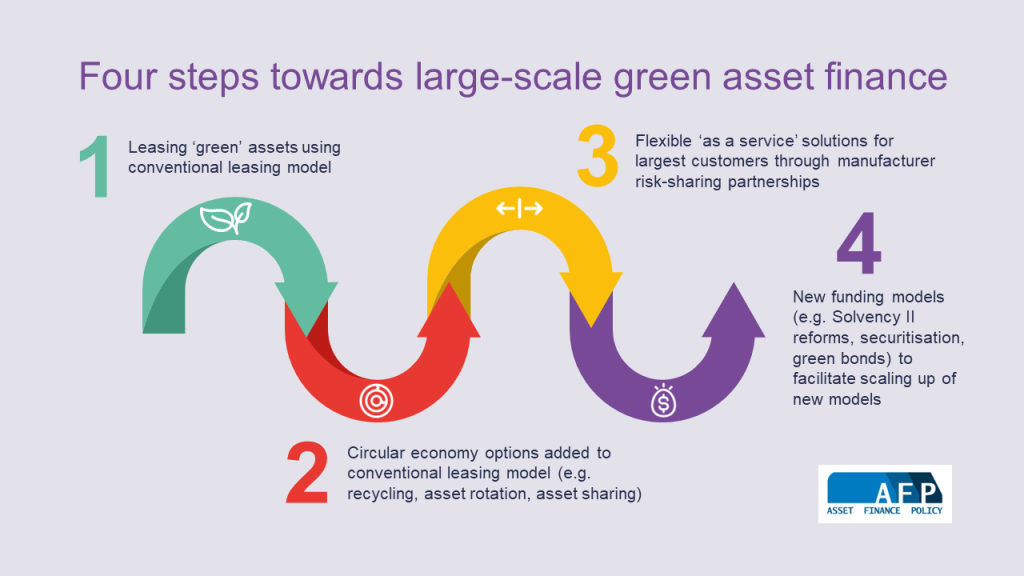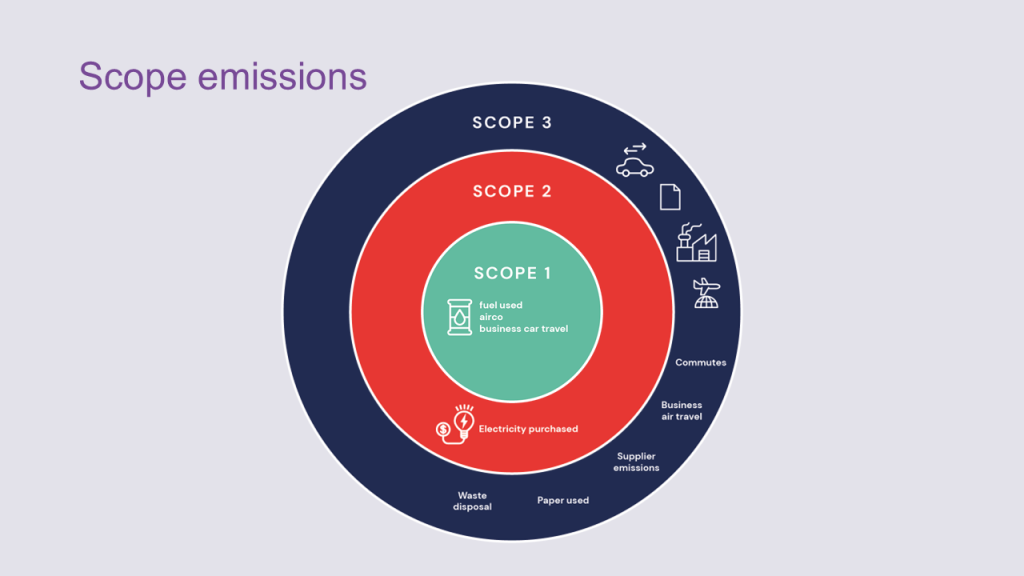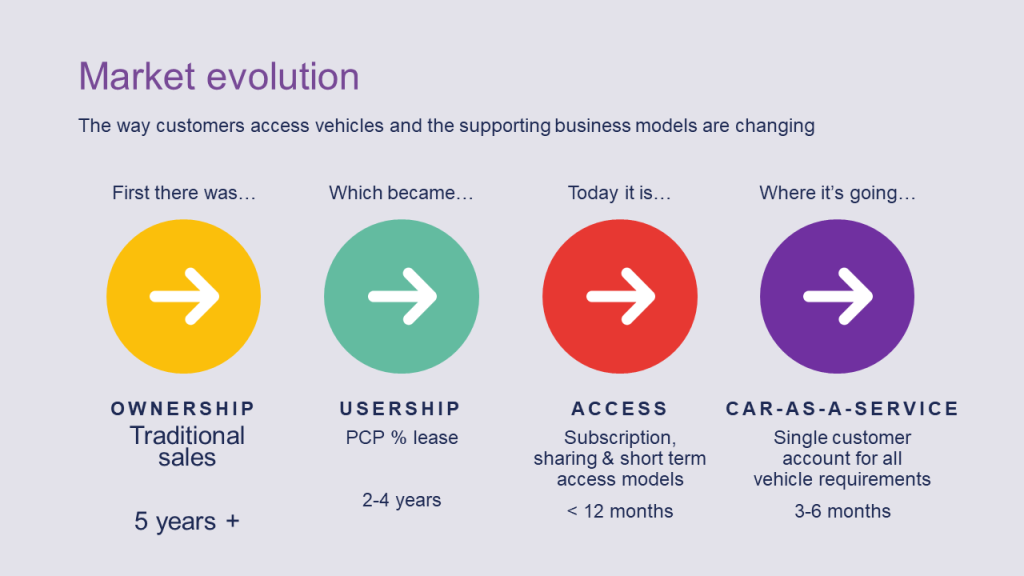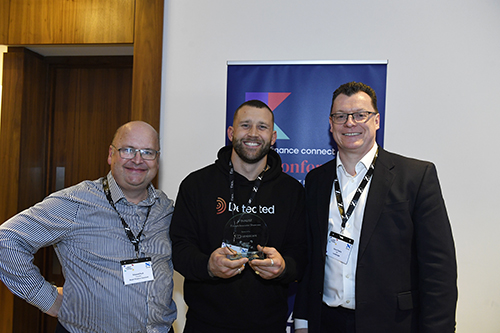How digital business ecosystems are changing the auto and equipment sectors
The concept of ecosystems originated in the geographical world but has traversed to the business and technological environment. As John Murray, Head of Solution Architecture (EMEA) at Alfa confirmed at the recent AFC Winter Conference, “Ecosystems are an environment with a set of rules and a number of participants who collaborate and compete against each other, where ultimately the overall value of the ecosystem is greater than the sum of its parts.”
Over time and following the pandemic, customers have become increasingly competitive and more demanding over what they expect to see in the marketplace, e.g. self-service applications, 24-7 availability as key requirements. Ecosystems answer these customer demands, with strong software providers offering a variety of components that are put together on a single platform which can be flexible, innovative and can adapt to requirements.
Building a digital ecosystem for asset finance is explored in Alfa’s Digital Directions 3 report, which draws on industry experts’ input to understand a future in which technology’s power is channelled not by individual operators, but by many participants, who collaborate in an ecosystem on delivering new value that exceeds the sum of its parts.
“Ecosystems are an environment with a set of rules and a number of participants who collaborate and compete against each other.”
APIs
Application programming interfaces or APIs are crucial to today’s digital economy as they are the foundation of many digital platforms, enabling organisations to build and plug-in new products and solutions in their ecosystems.
Digital Directions 3 emphasises the importance of open APIs as “a cornerstone of modern technology” in the way they simplify the process of connecting applications and enable ordered interaction between them.
For example, Alfa can provide APIs, such as to their credit decisioning engine, and clients can connect to these APIs with their own front-end portal. APIs together create an ecosystem that is incredibly powerful.
John Murray noted how Alfa can create direct links via open APIs to specialist products and services which will enrich their customers’ experience, reduce the need for Alfa to develop every element required in-house, and provide access to innovative fintech solutions.
“The system orchestrator plays a key role in making ecosystems deliver what is intended.”
Role of the orchestrator
The orchestration layer of the digital platform brings together all APIs and components, and is one of the most important aspects of the ecosystem for the customer journey.
As highlighted in Alfa’s Digital Directions 3 report, “The system orchestrator plays a key role in making ecosystems deliver what is intended. They are trusted advisors to their customers, charged with handling the complex data sharing, technology selection and value metrics involved in building an ecosystem. They have an overall picture of all the participants in the network, and an understanding of what new functionality is required, who will supply that requirement, and how risk and reward will be shared.”
An orchestrator could take on an advisory and consultancy role focusing on the customer and what is best for them, looking at what could be added to the platform, and then orchestrate what is the correct and best tool for the job.
With industry expertise and customer experience, a company such as Alfa would be ideally placed as an orchestrator bringing its trusted leadership to the ecosystem, forging successful partnerships, and integrating components to make a successful ecosystem. With Alfa’s industry knowledge, John Murray highlights that they can look at what is already available and put the solutions and products together effectively in a business relationship.
John confirms that as an ecosystem orchestrator, “the key thing is to understand the business benefits alongside the technical options that are available.”
Boston Consulting Group notes that, “Orchestrators are the pivotal players and stand to gain significantly as platform-based ecosystems increase market share and eat into the profits of traditional companies.”
“The key thing is to understand the business benefits alongside the technical options that are available.”
Collaborative partners
Whilst not a new business concept, ecosystems are essentially about choosing the right solutions and products and plugging them into a single platform for a seamless customer journey.
Ecosystems therefore need strong collaborations with partners who have a single focus and can deliver the functionality in a solid way. As John Murray points out, Alfa could build each individual function but this could be time consuming, or they could partner with a trusted company with a good reputation who can provide that functionality quickly. Alfa would help choose the best solution with the most flexibility that could add the most value to the ecosystem, while not necessarily doing much – if any – development work itself.
The key benefits when creating partnerships and ecosystems are twofold: (i) speed and improving time to market, so that customers get the solutions quickly; and (ii) reducing risk.
Ecosystem partnership strategies can generate significant value both by growing the core business and by expanding the portfolio into new products and services.
One such integration partnership with Alfa is Tomorrow’s Journey, whose SaaS platform JRNY is purpose-built for subscription and usage-based mobility, and integrates perfectly with the Alfa Systems platform. Tomorrow’s Journey CEO Chris Kirby said, “the customer’s desire for an enhanced digitalisation to plug gaps in their journeys resulted in a necessity to partner with other specialist brands and provide a seamless customer journey.”
But with so many solutions in an ecosystem, which players – large or small – actually benefit from the partnership? Andrew Martin, Chief Data Officer at CrediCar would like to think that everyone can benefit, with large companies, like Alfa, having the flexibility to plug in new technologies and leverage advancements that they can’t or don’t have time to build in-house, while smaller companies can focus on new solutions and technologies and then interface with big players who can plug in their packaged-up solution to the ecosystem.
There are also advantages for business customers who get the benefit of all these varying solutions and products being brought to them on one platform in a seamless journey.
“Ecosystem partnership strategies can generate significant value both by growing the core business and by expanding the portfolio into new products and services.”
Partnership risk
Digital business ecosystems present a number of potential pitfalls as well as opportunities. Working with smaller fintechs, who often need to generate new funding, can be seen as a risk for bigger players in case they suddenly disappear and there is a gap in the platform.
John Murray highlights that companies such as Alfa will ensure that they only collaborate with trusted partners with a successful track record, to ensure that their customer won’t be affected, with any risk being looked at from a business sense (a need to mitigate risk through procurement and due diligence of new partners) and a technological one (cloud offerings have resiliency built in which provides strong backing).
There is also an element of risk for smaller companies who partner with large companies in the ecosystem, as a large player could decide to build the third-party functionality themselves or replace it with a better solution. The use of APIs in a software platform built of many components allows the easy replacement of an individual component when a better one becomes available, making it easier and faster for platforms to evolve and develop.
Alfa’s John Murray points out that major companies like Alfa prefer to focus on the customer and customer journey when providing them with the partner’s functionality. They like to interact with smaller specialised companies as the more ecosystems they can be part of, the stronger the overall solution will be. If they were to create each solution internally, the time to market would be too long so it makes sense to partner with specialists.
Large tech companies no longer have to be seen as a one-stop-shop, and they present the opportunity to plug-in specialised flexible solutions which help to adapt to new customer requirements. In turn, small companies can be integrated to many different ecosystems creating a stronger offering.
Another risk could be identified when smaller companies move between the ecosystems of more than one big player. However, John Murray confirmed that Alfa is happy for their partners to be part of many ecosystems as it makes them stronger. The downside to being exclusive to one ecosystem is that you can only move as fast as that one system, so working with a large number of players allows the smaller company to be functionally stronger and have a wider awareness with new visions from different markets.
“Large tech companies are no longer seen as a one-stop-shop; they present the opportunity to plug-in specialised flexible solutions which help to adapt to new customer requirements.”
For more information on building digital ecosystems in asset finance, download Alfa’s Digital Directions 3 report, which offers insight into the emerging role of technology providers as ecosystems orchestrators, identify various types of ecosystems, and discuss the current opportunities to deploy them in order to meet the needs of the auto and equipment finance industry.











